 |
 |

|
|
|
An up close and personal interview with U.S. Air Force Veteran and Togetherweserved.com Member:
TSgt Stephen Taylor U.S. Air Force (1979-1988)
PLEASE DESCRIBE WHO OR WHAT INFLUENCED YOUR DECISION TO JOIN THE AIR FORCE?
As a kid growing up in the 60's and 70's, my heroes were the Astronauts. I wanted to become one, just like thousands of other kids. Of course, most Astronauts had backgrounds in military aviation and went to school at one of the service academies. With this in mind, I did very well in school for the most part, played many sports, and was involved in many other activities. Unfortunately, my math test scores were not consistently strong enough to seriously consider applying. I had come to the conclusion that I probably didn't have the required academic discipline to be successful in college, even though I had been accepted to a couple of good colleges to pursue a degree in either Physics or Earth Sciences. However, in the interest of full disclosure, it must be acknowledged that there were "competing interests" such as always having cash from part-time jobs and girl friends. Enough said. did very well in school for the most part, played many sports, and was involved in many other activities. Unfortunately, my math test scores were not consistently strong enough to seriously consider applying. I had come to the conclusion that I probably didn't have the required academic discipline to be successful in college, even though I had been accepted to a couple of good colleges to pursue a degree in either Physics or Earth Sciences. However, in the interest of full disclosure, it must be acknowledged that there were "competing interests" such as always having cash from part-time jobs and girl friends. Enough said.
I have always wanted to join the U.S. Air Force ever since I was a young boy. Therefore, I decided to enlist in the U.S. Air Force over the objections of my parents, family members, girlfriend, and anyone else who wanted to pile on.
WHETHER YOU WERE IN THE SERVICE FOR SEVERAL YEARS OR AS A CAREER, PLEASE DESCRIBE THE DIRECTION OR PATH YOU TOOK. WHAT WAS YOUR REASON FOR LEAVING?
I would describe my career path as typical for most Airman of that time period; until I applied for the Technical Training Instructor - Special Duty Assignment.
In March, 1979, I enlisted in the U.S. Air Force under the Delayed Entry Program with a "guaranteed job" as a 462X0 Aircraft Armament Systems Specialist. Systems Specialist.
In July, 1979, I started Basic Military Training (BMT) at Lackland AFB, Texas, which lasted six weeks. Afterwards, I attended Technical Training on the F-4 Aircraft Armament System at Lowry AFB, Colorado from September, 1979 through - October, 1979. Additionally, Field Training Detachment (FTD) training for the F-4E Weapons Release System was provided at Moody AFB, Georgia just prior to my first duty assignment
My first duty assignment was the 57th Fighter Interceptor Squadron located in Keflavik, Iceland from December, 1979 until December, 1980. This overseas short tour coincided with the reorganization of major commands. The Aerospace Defense Command (ADCOM) was being absorbed into the Tactical Air Command (TAC).
I was a newly "minted" Airman when assigned to the 57th FIS as a Weapons Mechanic. In addition to loading aircraft munitions and maintaining the F-4 weapons systems, I spent a considerable amount of time cross-training into many functions performed by the F-4 Aircraft Crew Chief. After a few months, I was assigned to the 57th FIS Alert Facility where my duties included servicing the aircraft; as well as assist in strapping in the aircrew, starting the aircraft motors, and arming the missiles when the F-4E's were scrambled to intercept Soviet TU-95 Bear bombers that entered into Icelandic airspace.
My next duty station was Luke AFB, Arizona from January,1981 till January, 1983. I was assigned to the Tactical Air Command / 555th Tactical Fighter Squadron / 405th Aircraft Generation Squadron. I spent most of my time as an Weapons Load Crew Chief and armament systems specialist / technician for the F-15 aircraft. Our unit was responsible for conducting flight line operations in support of training F-15 pilots from Israel, Saudi Arabia, and Japan, as well as the U.S. Air Force.
In 1982, I submitted an application and was accepted for the Technical Training Instructor - Special Duty Assignment. From January, 1983 till April, 1988 I was assigned to the Air Training Command / 3460th Technical Training Group / Armament Systems Branch. My duties encompassed that as an Instructor for the F-16, F-15 and F-4 aircraft armament systems, F-16 Course Writer and Curriculum Developer, and Instructor Supervisor for the F-16 (briefly) and F-4 aircraft armament systems courses.
In April, 1988, I left the U.S. Air Force taking advantage of an "early out" program that stemmed from the Gramm-Rudman budget cuts. I had been selected for promotion to Master Sergeant, and nearly completed my B.S. in Business Administration at the time of my separation. I decided to make Denver, Colorado my home.
IF YOU PARTICIPATED IN ANY MILITARY OPERATIONS, INCLUDING COMBAT, HUMANITARIAN AND PEACEKEEPING OPERATIONS, PLEASE DESCRIBE THOSE WHICH WERE THE MOST SIGNIFICANT TO YOU AND, IF LIFE-CHANGING, IN WHAT WAY.
My time in the U.S. Air Force coincided with the Cold War (1947-1991). Many people consider this era a time of peace. I strongly disagree! Scores of aircraft and many lives were lost due to operations, training mishaps, and accidents during my time in the service. The Armed Forces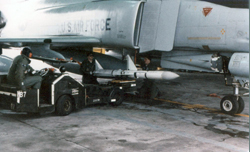 of the United States incurred significant casualties while maintaining the "peace" over those years. of the United States incurred significant casualties while maintaining the "peace" over those years.
One of the fondest memories I have was when I was assigned to the 57th Fighter Interceptor Squadron in Keflavik, Iceland. One particular morning, I was assigned to End Of Runway (EOR) duty for the very first time. It was about 0700 hours but it was still quite dark when four F-4E's taxied to the EOR pad for final checks. The lights, noise, smell, and vibrations coming from these aircraft assaulted my senses. I followed my training and performed all of the assigned tasks as expected until the aircraft were marshalled to the runway. The takeoff roll with the F-4's full afterburner was amazing to experience close up.
Pretty exciting stuff for an 18 year kid. Quietly elated, I felt gratified. It was at the EOR that I knew I was doing the right thing, and was meant to be in the U.S. Air Force. Later, while assigned to the 57th FIS Alert Facility and having assisted in scrambling F-4E's, I once again felt a sense of pride and satisfaction. Even though I was only an Airman First Class, I felt confident that I was making a significant contribution towards our Nation's defense. For the first time, I knew that I was involved in something much bigger than myself.
FROM YOUR ENTIRE SERVICE, INCLUDING COMBAT, DESCRIBE THE PERSONAL MEMORIES WHICH HAVE IMPACTED YOU MOST?
The overwhelming majority of my memories seem to include a sense of pride and satisfaction. During the course of my 8 year, 8 month enlistment I definitely felt that I was making significant contributions towards our Nation's defense. These contributions include:
1) Participating in the fighting of the Cold War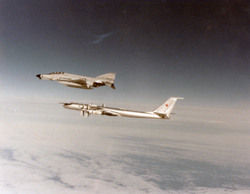 as an F-4E Armament Systems Specialist and Aircraft Crew Chief, while assigned to the 57th Fighter Interceptor Squadron in Keflavik, Iceland, as an F-4E Armament Systems Specialist and Aircraft Crew Chief, while assigned to the 57th Fighter Interceptor Squadron in Keflavik, Iceland,
2) Supporting our Nation's national security interests throughout the world as an F-15 Weapons Load Crew Chief and Aircraft Armament Systems Specialist while supporting F-15 fighter pilot training for the United States, Israeli, Saudi Arabia and Japan at Luke AFB, Arizona.
3) Training Apprentice Aircraft Armament System Specialists as an F-16, F-15 and F-4 Technical Training Instructor at Lowry AFB, Colorado. Its these students who would later use these skills to great effect during Operation Desert Storm.
Some may think that these statements are a little delusional. Maybe there are. Regardless, I take comfort in knowing that my service was performed as part of a "larger picture" of our Nation's defense.
OF ALL THE MEDALS, AWARDS, FORMAL PRESENTATIONS AND QUALIFICATION BADGES YOU RECEIVED, OR ANY OTHER MEMORABILIA, PLEASE DESCRIBE THOSE WHICH ARE THE MOST MEANINGFUL TO YOU AND WHY?
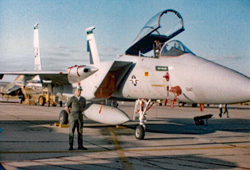 Sorting through my U.S Air Force insignia that I have kept in a box over the past twenty-five years, I found myself creating three, distinct piles. Sorting through my U.S Air Force insignia that I have kept in a box over the past twenty-five years, I found myself creating three, distinct piles.
The first pile represented "Technical Competency" within one's career field; as manifested by the Maintenance Badge, Missileman Badge, and ATC Master Instructor Badge. The second pile represented "Organizational and Personal Achievement" throughout one's career; as manifested by the various Ribbons. The third pile represented "Leadership and Technical Competency" throughout one's career; as manifested by the various Stripes.
In my case, the Technical Sergeant chevrons were the most meaningful to me, mainly because of what they represented, and the amount of effort required to obtain them. This would also hold true for the Distinguished Graduate and Military Citizenship awards that were presented while attending the ATC Command NCO Academy.
WHICH INDIVIDUAL(S) FROM YOUR TIME IN THE MILITARY STAND OUT AS HAVING THE MOST POSITIVE IMPACT ON YOU AND WHY?
There were four individuals that stand out in having a positive impact on me.
MSgt Richard Vancil - MSgt Vancil was the 57th FIS Weapons Superintendent while I was assigned to the 57th FIS in Keflavik, Iceland. He was a confident, young Master Sergeant, who was a mission-oriented leader and cared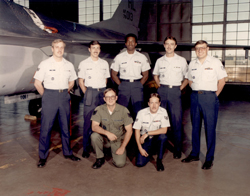 deeply about the technical and professional development of those under his charge, especially a lowly A1C such as myself. He was an Aerial Gunner on an AC-130 Spectre gunship during the Vietnam War and his uniform reflected it. MSgt Vancil also displayed a great sense of humor! His experience as an Aerial Gunner gave him a rather unique insight into performing aircraft maintenance. It appeared to me that MSgt Vancil could fix any engine, radar, avionics, hydraulics, electrical, or weapons system problem using only a common screwdriver. Later, CMSgt Richard Vancil went on to many other leadership assignments all over the world; culminating at Tactical Air Command Headquarters at Langley AFB, Virginia. deeply about the technical and professional development of those under his charge, especially a lowly A1C such as myself. He was an Aerial Gunner on an AC-130 Spectre gunship during the Vietnam War and his uniform reflected it. MSgt Vancil also displayed a great sense of humor! His experience as an Aerial Gunner gave him a rather unique insight into performing aircraft maintenance. It appeared to me that MSgt Vancil could fix any engine, radar, avionics, hydraulics, electrical, or weapons system problem using only a common screwdriver. Later, CMSgt Richard Vancil went on to many other leadership assignments all over the world; culminating at Tactical Air Command Headquarters at Langley AFB, Virginia.
Sgt Craig Oliver - 555th TFS Weapons Crew Chief - Sgt Oliver worked closely with me while I made the transition from the F-4E to F-15 armament systems. I considered him to be a true subject-matter expert. I had to spend a considerable number of hours reviewing applicable Technical Orders and checklists in order to keep up. I tried to achieve the same level of technical competency that was routinely displayed by Sgt Oliver as I progressed through the Senior Airman, Sergeant, and Staff Sergeant ranks at Luke AFB.
TSgt Marc A. Martel - 555th TFS Shift Supervisor - TSgt Martel played an instrumental role in guiding me through the Airman to NCO transition. I learned many lessons from TSgt Martel, both personally and professionally - sometimes painfully. TSgt Martel set the example as a Supervisor through his uniform, military bearing, self-discipline, and his mission-oriented sense of duty. He was a true professional. Looking back, TSgt Martel played a key part in my maturation process.
SSgt James A. Young - Jim was a fellow F-16 and F-15 Instructor, and my roommate before I got married. He was a very sharp individual in every aspect of military life. Coworkers dreaded having to stand next to Jim during Open Ranks inspections. Jim went on to have a stellar career in the Weapons career field while serving in TAC, ATC, PACAF, SAC, USAFE, and AAC; culminating as a Wing Weapons Manager, 354th Fighter Wing at Eielson AFB, Alaska. Sadly, CMSgt James A. Young passed away on September 6, 2008 after a long and valiant battle with cancer.
CAN YOU RECOUNT A PARTICULAR INCIDENT FROM YOUR SERVICE WHICH MAY OR MAY NOT HAVE BEEN FUNNY AT THE TIME, BUT STILL MAKES YOU LAUGH?
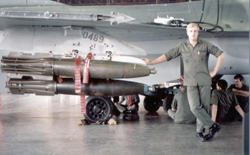 While assigned to the 57th Fighter Interceptor Squadron in Keflavik, Iceland, I spent a half a day cleaning up bird guts and other parts, after an F-4E had a bird strike with what probably was a large seagull. The bird initially impacted in the muzzle of the nose gun and took out the centerline fuel tank adapter faring. A large portion of the bird also impacted on the AIM-7 at the left forward station, glancing off, taking out the seeker head of an AIM-9 missile loaded on the left pylon station. YUCK! Being the youngest Airman First Class on the line, I got the job to clean it up. The good news was that I got a couple of days off for my efforts. While assigned to the 57th Fighter Interceptor Squadron in Keflavik, Iceland, I spent a half a day cleaning up bird guts and other parts, after an F-4E had a bird strike with what probably was a large seagull. The bird initially impacted in the muzzle of the nose gun and took out the centerline fuel tank adapter faring. A large portion of the bird also impacted on the AIM-7 at the left forward station, glancing off, taking out the seeker head of an AIM-9 missile loaded on the left pylon station. YUCK! Being the youngest Airman First Class on the line, I got the job to clean it up. The good news was that I got a couple of days off for my efforts.
WHAT PROFESSION DID YOU FOLLOW AFTER YOUR MILITARY SERVICE AND WHAT ARE YOU DOING NOW? IF YOU ARE CURRENTLY SERVING, WHAT IS YOUR PRESENT OCCUPATIONAL SPECIALTY?
For the past fifteen years I have been self-employed as a management consultant in Quality Assurance Management and Quality Engineering. I visit many different types of companies throughout the world as a Lead Quality Auditor for the ISO 9001 quality management system standard.
Prior to becoming self-employed I spent seven years as a Quality Engineer and Quality Manager for a couple of small manufacturing companies that produced precision parts and tooling services for the automotive, computer peripheral, bio-medial, and pharmaceutical equipment industries. I am certified as a Quality Engineer, Reliability Engineer, and Quality Auditor through the American Society for Quality.
IN WHAT WAYS HAS SERVING IN THE MILITARY INFLUENCED THE WAY YOU HAVE APPROACHED YOUR LIFE AND YOUR CAREER?
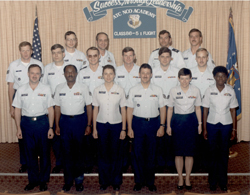 I must be honest and confess that I have often wondered how things might have worked out if I had decided to stay in the U.S. Air Force as a Senior NCO, or even pursued a Commission. I have had many opportunities! I must be honest and confess that I have often wondered how things might have worked out if I had decided to stay in the U.S. Air Force as a Senior NCO, or even pursued a Commission. I have had many opportunities!
While the technical skill sets were unique to the U.S. Air Force, I have been able to effectively use my managerial, supervisory, leadership, and communications skill sets that were obtained from course work and experiences provided through my Professional Military Education and Technical Training Instructor credentials. I have now come to expect excellence and more from myself.
BASED ON YOUR OWN EXPERIENCES, WHAT ADVICE WOULD YOU GIVE TO THOSE WHO HAVE RECENTLY JOINED THE AIR FORCE?
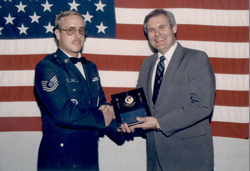 Be open-minded and considerate of others at all times. Try to approach your day from the standpoint that you are constantly being evaluated, even when no one is around. Associate yourself with good people who set the example, and try to keep your distance from the others. Listen before speaking. Understand what it is to be a professional. Be open-minded and considerate of others at all times. Try to approach your day from the standpoint that you are constantly being evaluated, even when no one is around. Associate yourself with good people who set the example, and try to keep your distance from the others. Listen before speaking. Understand what it is to be a professional.
I would encourage any young Airman to take the time to understand the "Big Picture" or mission, and exactly how his/her job contributes to the success of that mission.
IN WHAT WAYS HAS TOGETHERWESERVED.COM HELPED YOU REMEMBER YOUR MILITARY SERVICE AND THE FRIENDS YOU SERVED WITH.
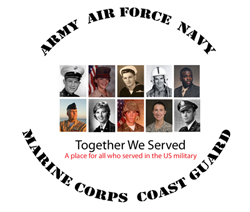 |
| TWS and The USAF |
TogetherWeServed.com provides a wonderful venue to collect relevant facts and capture memories regarding one's own military service.
The structured approach, or template, seems to trigger key memories. The ability to upload photos and select insignia means that we no longer have to keep stuff in a disorganized box.
|


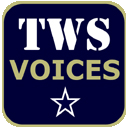
Read Other Interviews in the TWS Voices Archive
| Share this Voices Edition on:


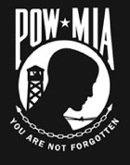  |
|
TWS VOICES
TWS Voices are the personal stories of men and women who served in the US Military and convey how serving their Country has made a positive impact on their lives. If you would like to participate in a future edition of Voices, or know someone who might be interested, please contact TWS Voices HERE.
This edition of AirForce Voices was supported by:
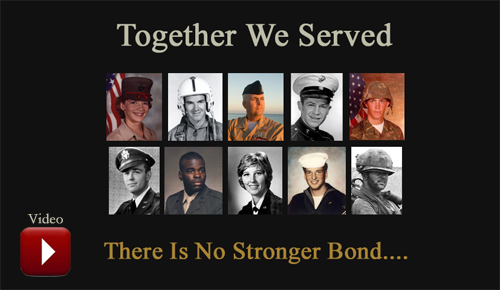
AirForce.Togetherweserved.com
For current and former serving Members of the United States Air Force, Army Air Corps, Air Force Reserve and Air National Guard TogetherWeServed is a unique, feature-rich resource helping Airmen reconnect with lost Wingmen, share memories and tell their Air Force story.
To join AirForce.Togetherweserved.com, please click HERE.
|
|